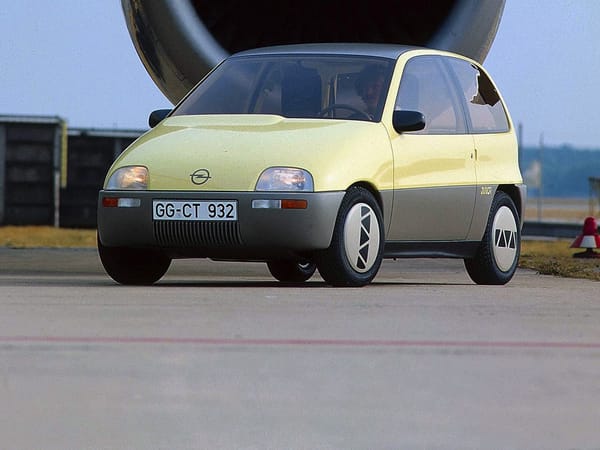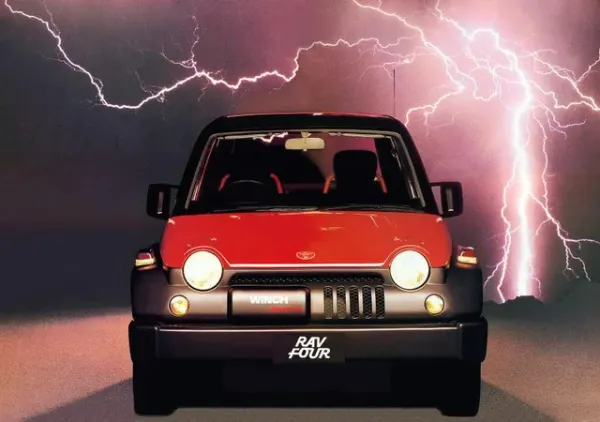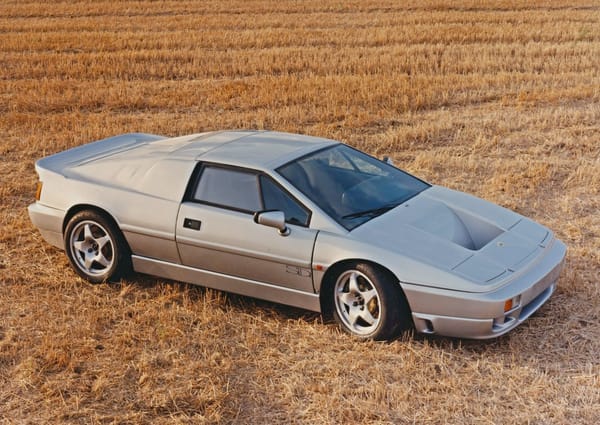Renault Étoile Filante
Car of the Day #64: 1956 Renault Étoile Filante
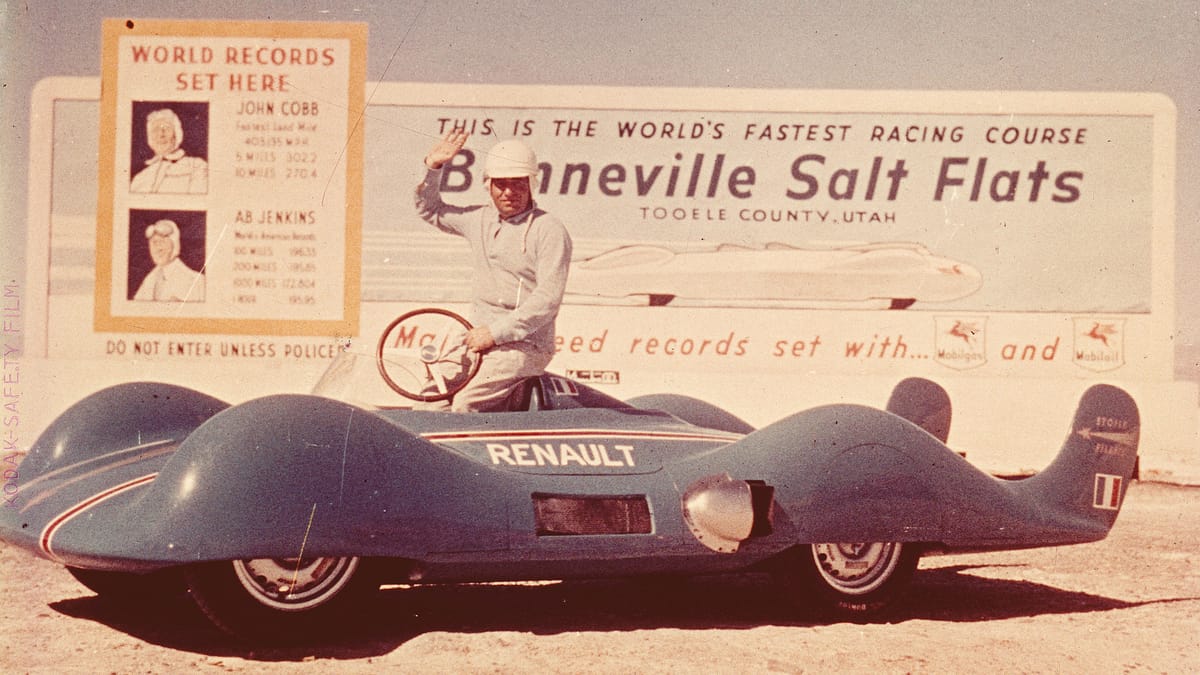
Records, the saying goes, are made to be broken. Certainly, records are useful goalposts in life. Guiding stars, if you will.
In early automotive history, France was a leader. They hosted the first auto race, in 1895. They had some of the best automotive engineers, like André Lefèbvre and Ettore Bugatti.
And they had a booming automotive industry, with the likes of Citroën, Delage, Hotchkiss, Peugeot, Delahaye, Talbot-Lago, and many others.
Even with the innovative Citroën 2CV for everyman and the Facel Vega for elites, by the mid-1950s, France's early success in the auto industry was beginning to wane.
So with the early development of forward-thinking speed-hungry prototypes such as the Rover JET1, Socema-Gregoire, and Fiat Turbina in the late 1940s and early 50s, the boss of small French jet turbine company Turboméca approached Renault with an idea.
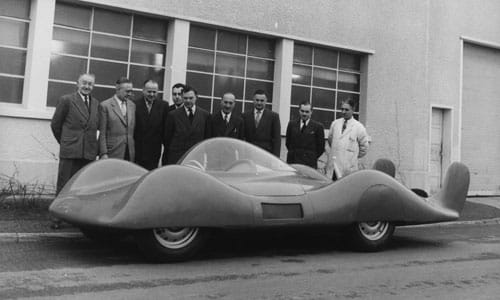
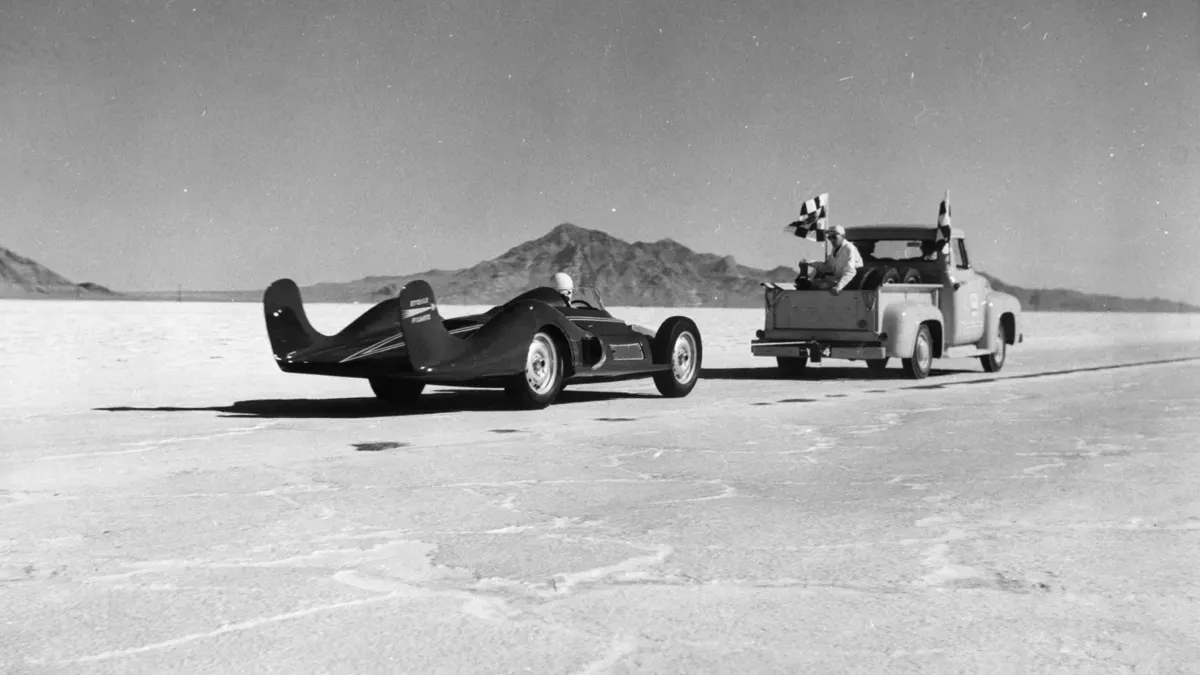
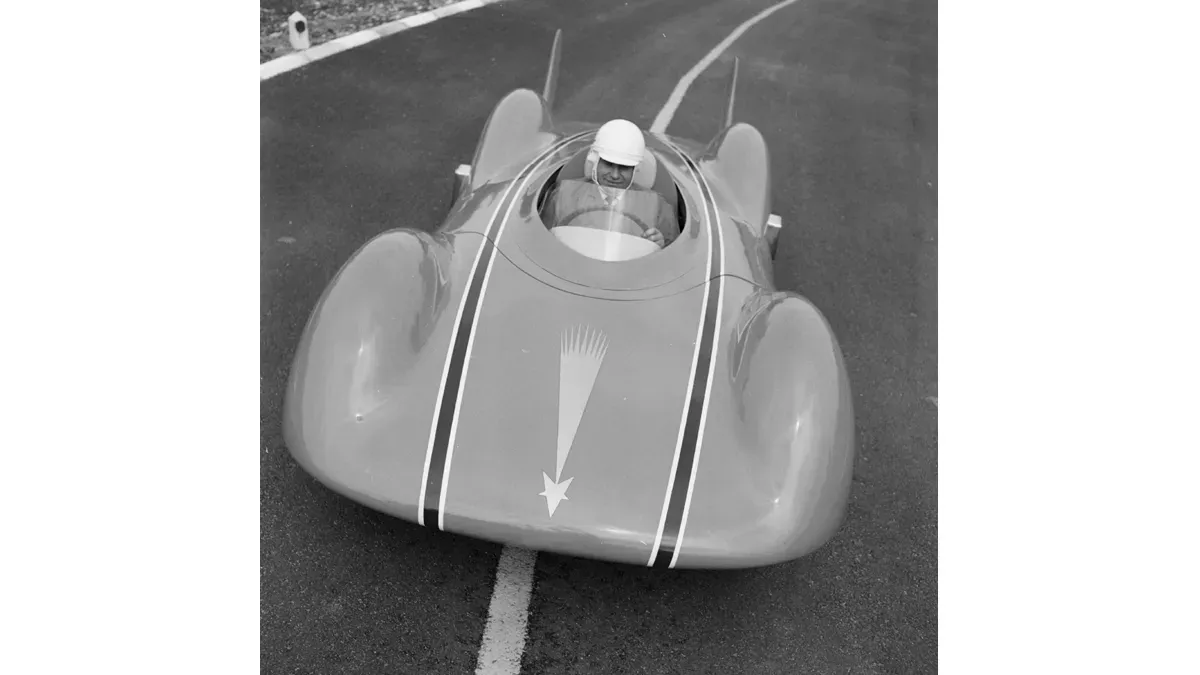
Note the car originally had a bubble roof • via Renault
Let's put a powerful jet turbine engine in a car, Joseph Szydlowski thought, in order to set some world speed records. He figured Renault would be the perfect partner to make this happen, and he was right. Nice.
With experienced engineers from Renault and Turboméca heading the program, the Étoile Filante—Shooting Star—was conceived and tested over a period of two years.
At its heart was a Turboméca turbine engine, making 270 horsepower at a fantastic 28,000 rpm, which was mated to a semi-automatic 'Transfluide' transmission. Built around the drivetrain was a tubular chassis with inboard disc brakes and a stunning polyester-fiberglass body sans rollover protection.
In other words, it looks like it WHOOoo o o s h e d off the pages of a Michel Vaillant comic.
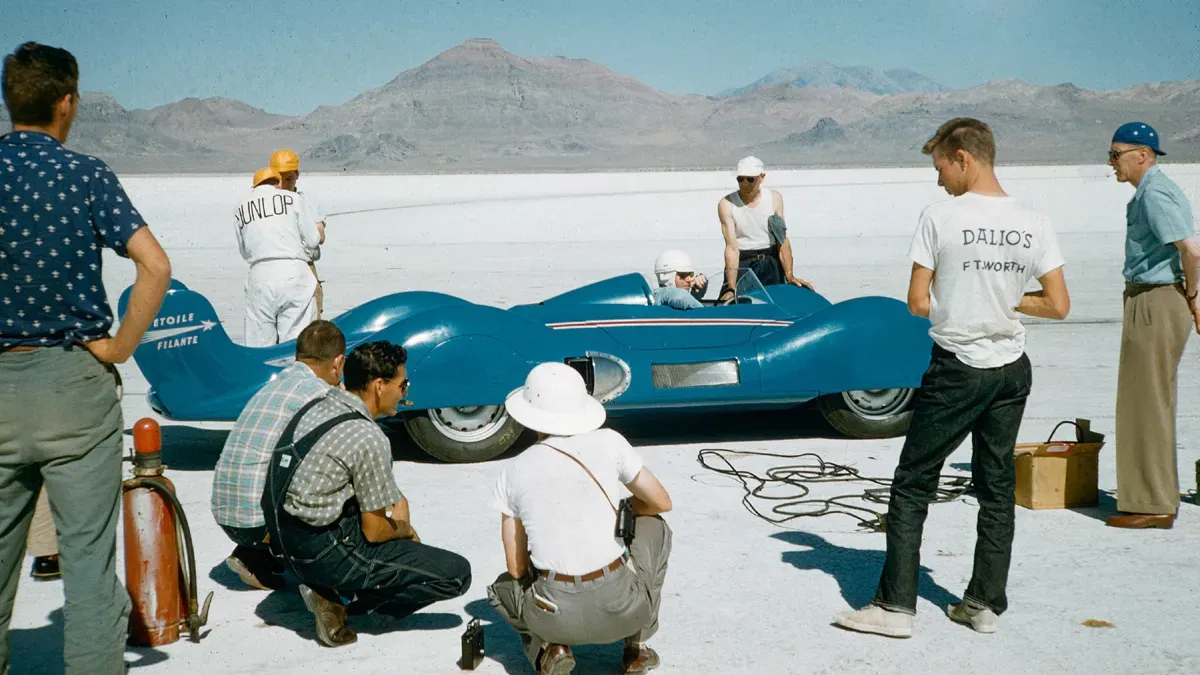
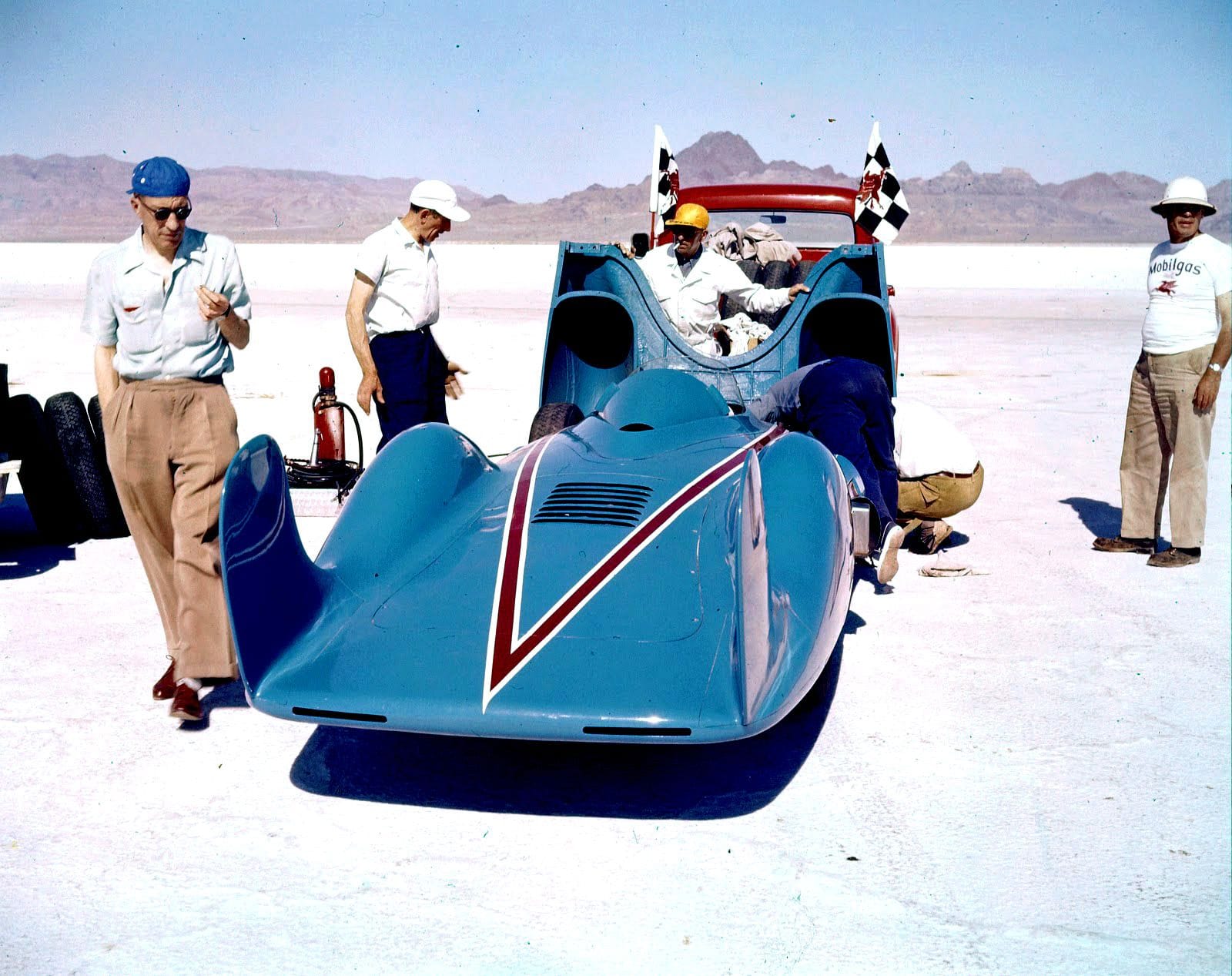
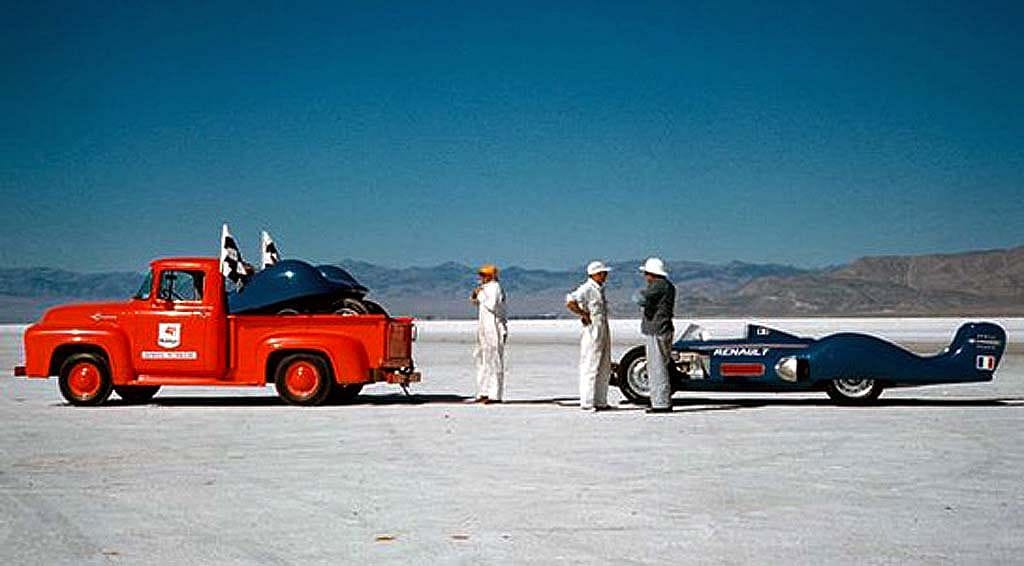
Étoile Filante at Bonneville in 1956 • via Renault
To put that into perspective, the Formula 1 World Championship-winning car in 1956 was the Lancia D50—285 horsepower and a top speed of around 180 mph…given enough space.
Comparatively, Renault's machine was on another level.
On September 5, 1956, Jean Hebert set the world record for turbine-powered vehicles at 308.9 km/h (191.94 mph).
Before you catch your breath, note the car's dramatic reverse 'V' stripe resplendent in shades honoring the Tricoleur, paired with gold foil tail fin iconography.
Before the Italians said Countach, the French said Sacrebleu.
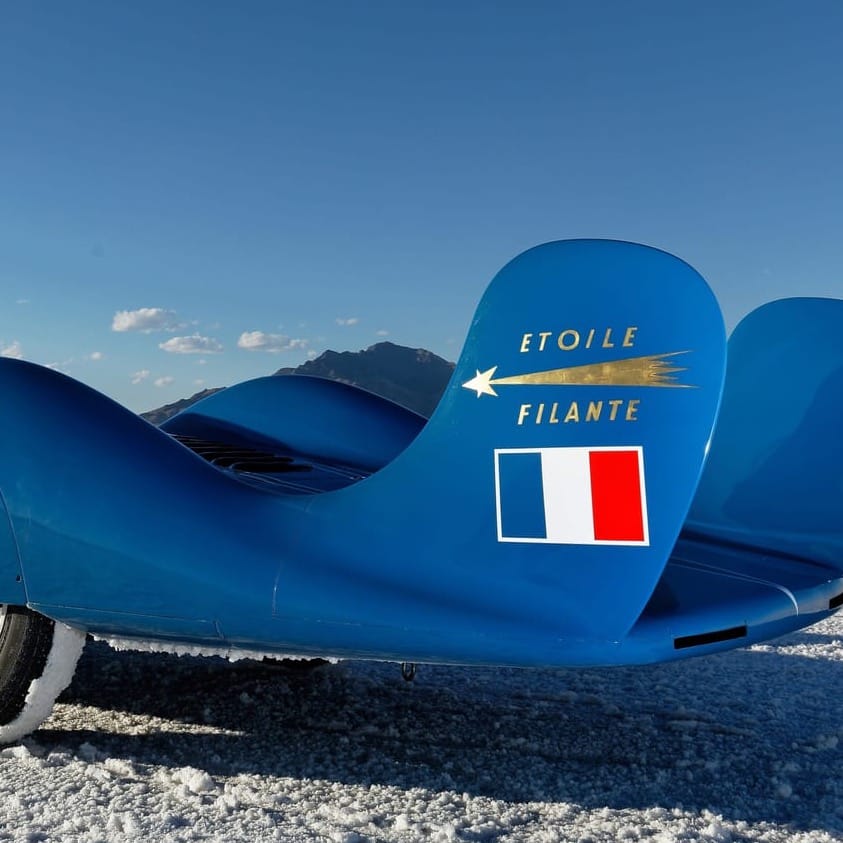
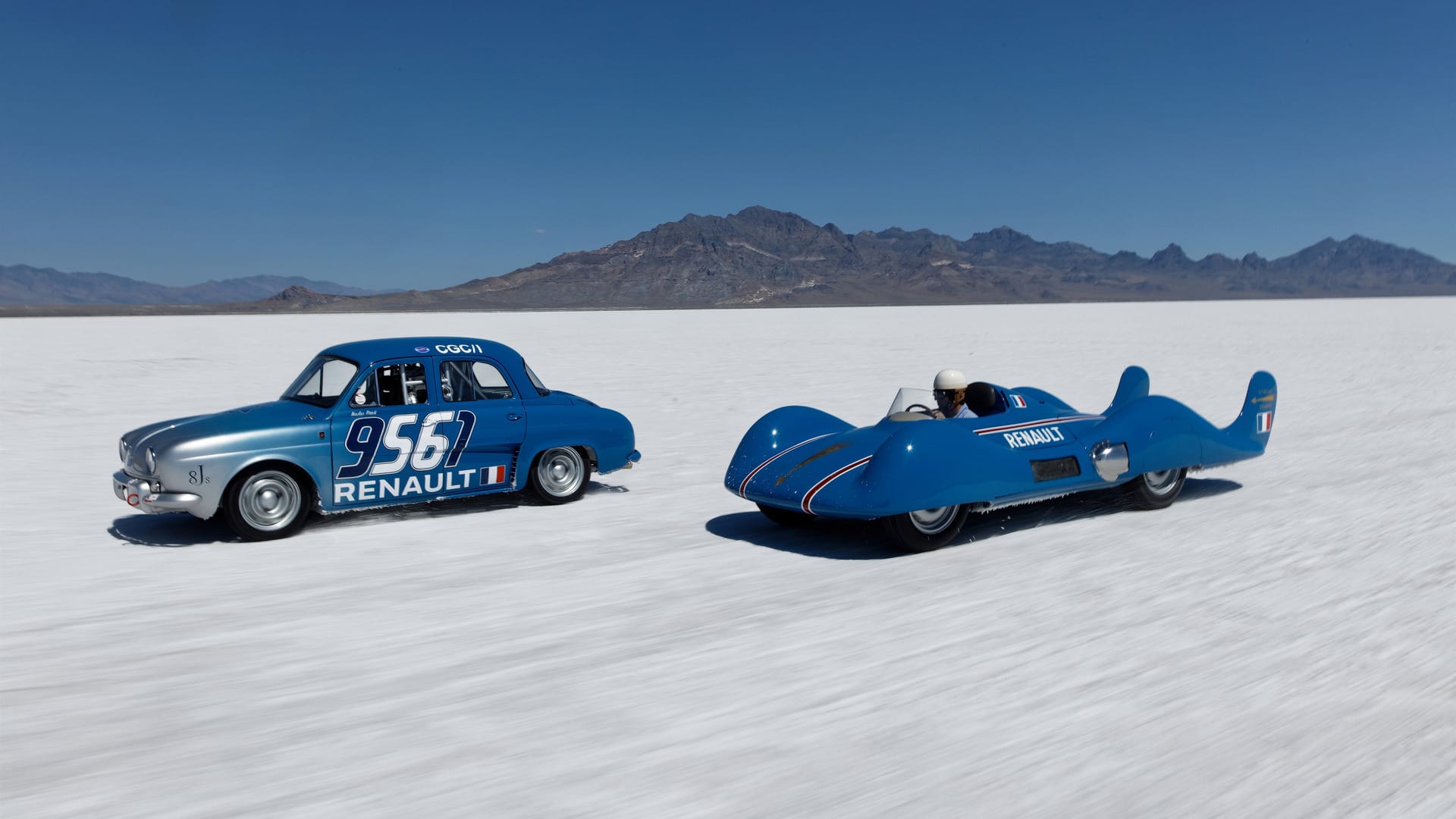
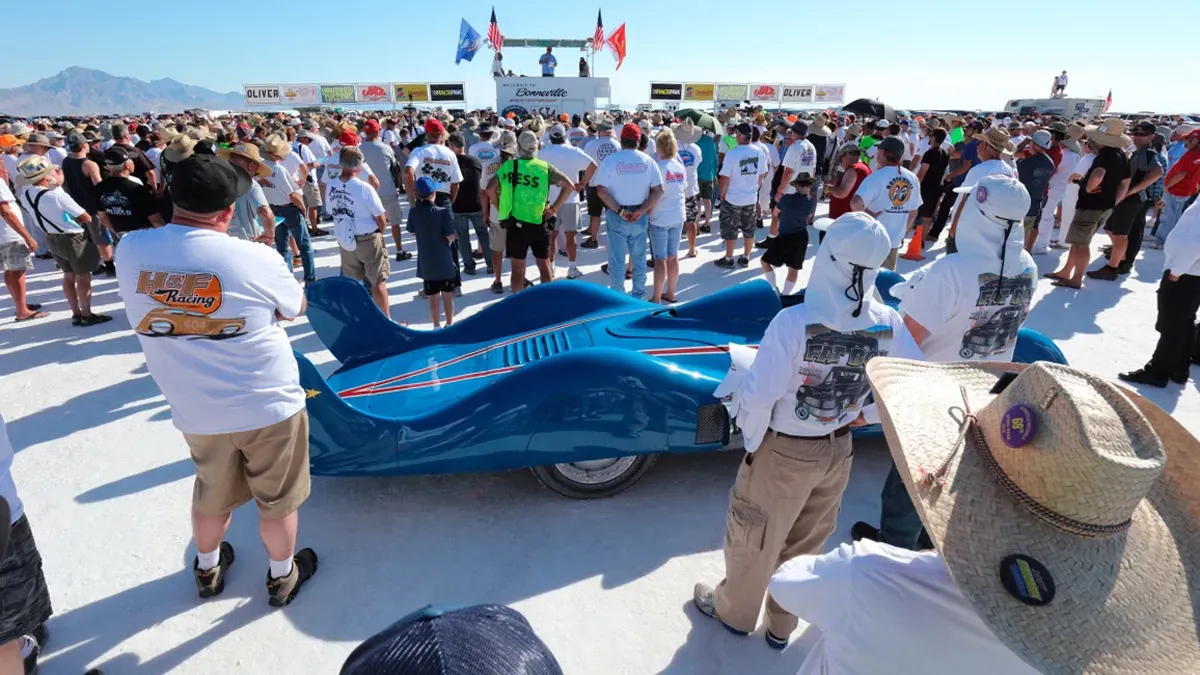
Étoile Filante at Bonneville in 2016 • via Renault
After his run in 1956? The turbine "burnt up." The car was dismantled and stored.
It was neglected until relatively recently, when Renault decided to restore it to its original condition. (But keeps ignoring my emails asking to drive it.)
As fast and innovative as the Étoile Filante was, it was far from the final attempt at a fast car being motivated by a turbine.
Which one should I look at next? 👀


SUPPORTING MEMBERS
Thank you to my supporting members: Ben B., Brad B., Chris G., Daniel G., Damian S., Daniel P., Ingrid P., Karl D., Luis O., Michael J., Michael L., Michelle S., Mike B., Mike L., Mike M., Richard W., Sam L., Wiley H.


